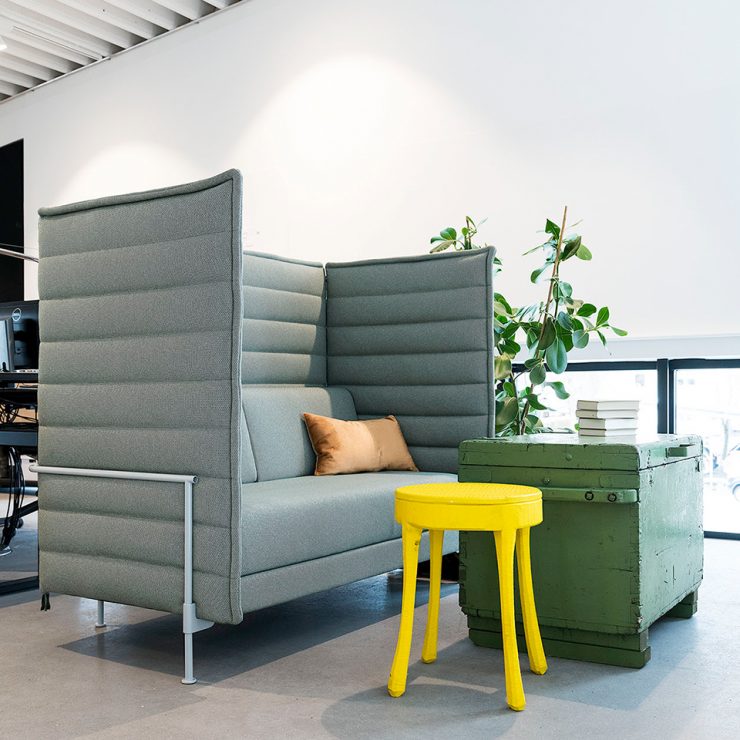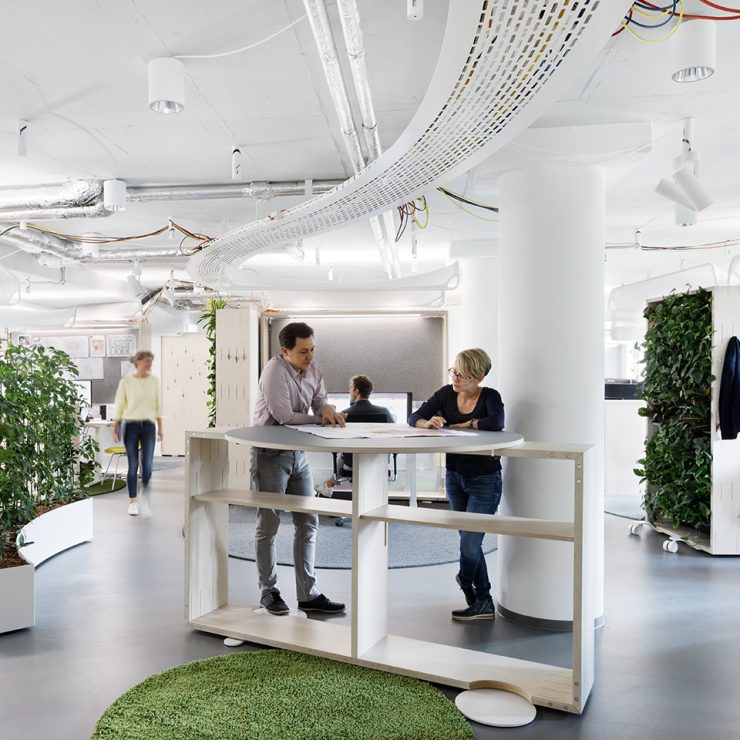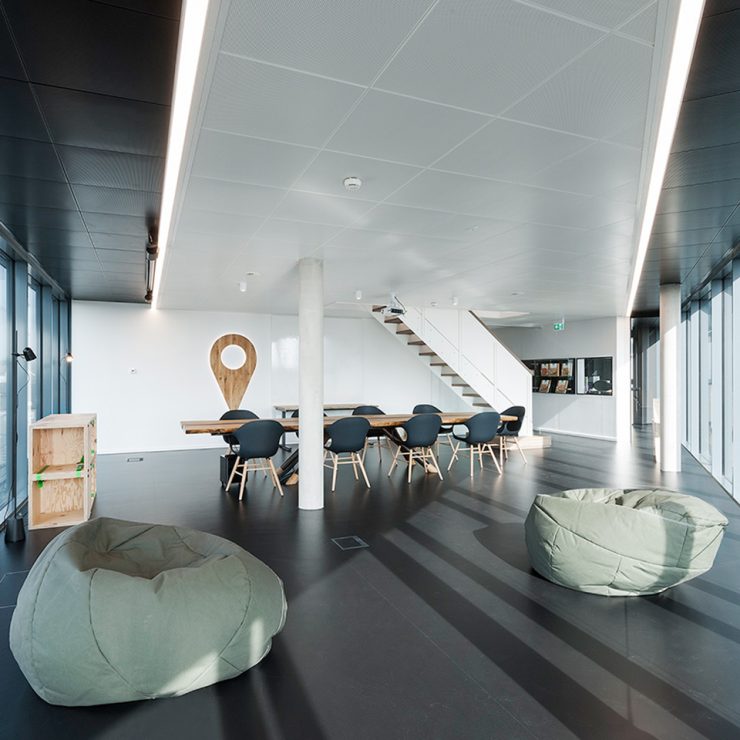We keep coming back to this question. Do you know that feeling? You step into a room and immediately you notice: I feel comfortable here. We are fully convinced that the effect of rooms has a direct effect on our well-being. Therefore, also on our success – whether in the private or in the professional environment. With this knowledge we go to the design of buildings and rooms.
There are two additional aspects to the architecture of corporate spaces: The office should not only look good, it must also function well. It should make the values and philosophy of the company apparent and tangible. The task for planners and strategists has become far more complex in recent years because our work processes have completely changed. In the 1990’s we still dialed into the Internet by modem and blocked the phone line, while we worked through one pile on the desk, then another. Today, we work almost completely digitally and in a constant process at a significantly faster pace. Today’s office has to respond to this.
Naturally, it’s about functions. Although, it’s not just about providing employees with height-adjustable desks, mobile pedestals and the best technology. Rather, it requires planning that promotes innovation and creativity. It is well known that the best ideas do not come in front of the screen. The creation of community spaces, meeting points or a café, primarily generate additional costs. However, it is worthwhile at this point to question carefully whether every employee really needs their own desk or whether every imaginary (partition) wall is truly necessary. A flexible concept tailored to requirements makes it possible to invest in those areas that benefit cooperation and thus increase employee satisfaction. In all honesty: a dissatisfied employee costs significantly more than an ergonomic desk chair.
The design of the office space is a strategic decision of the company management. It says a great deal more about the company than meets the eye. It is about an authentic representation of the corporate identity that is perceived intuitively by customers and guests and experienced by the employees.


